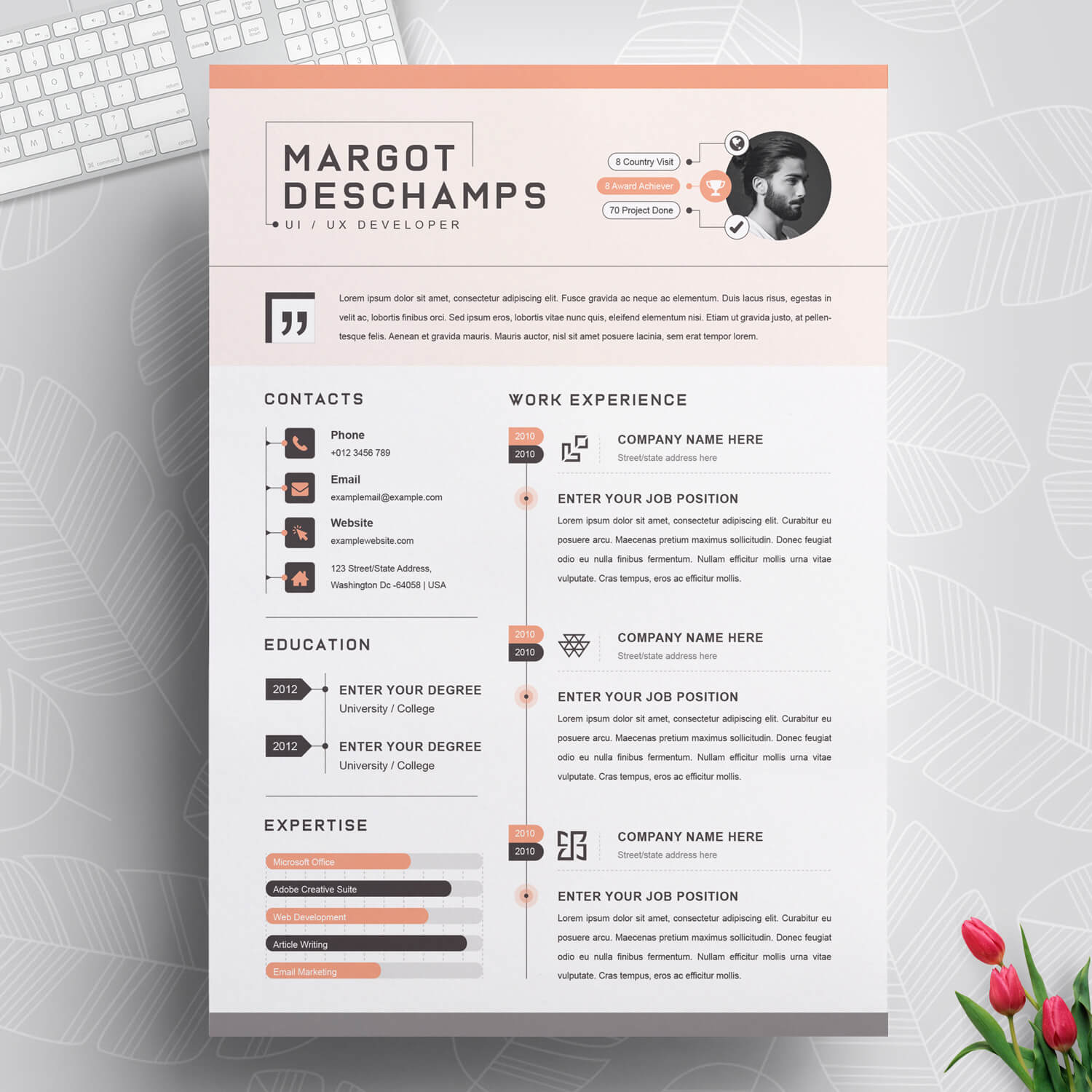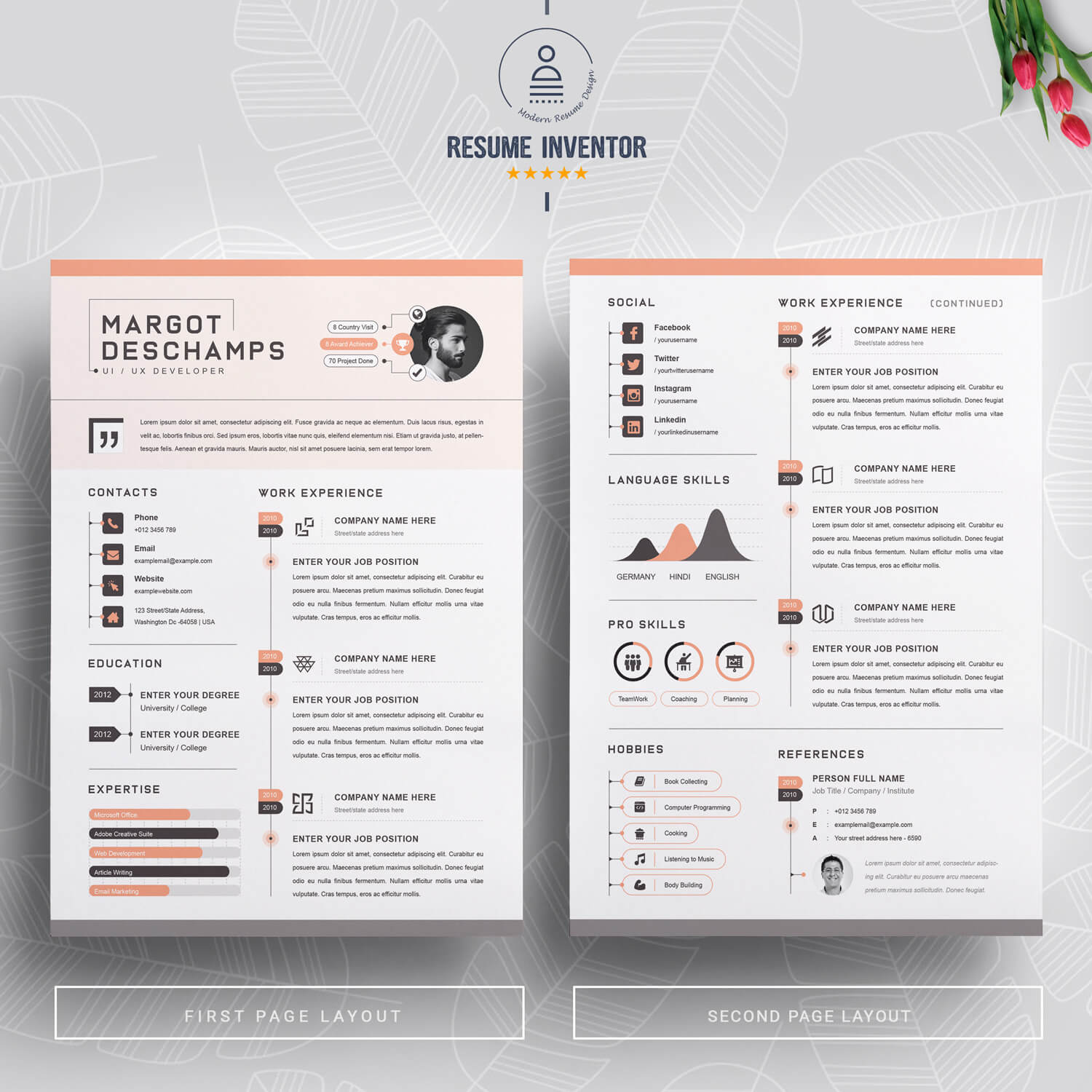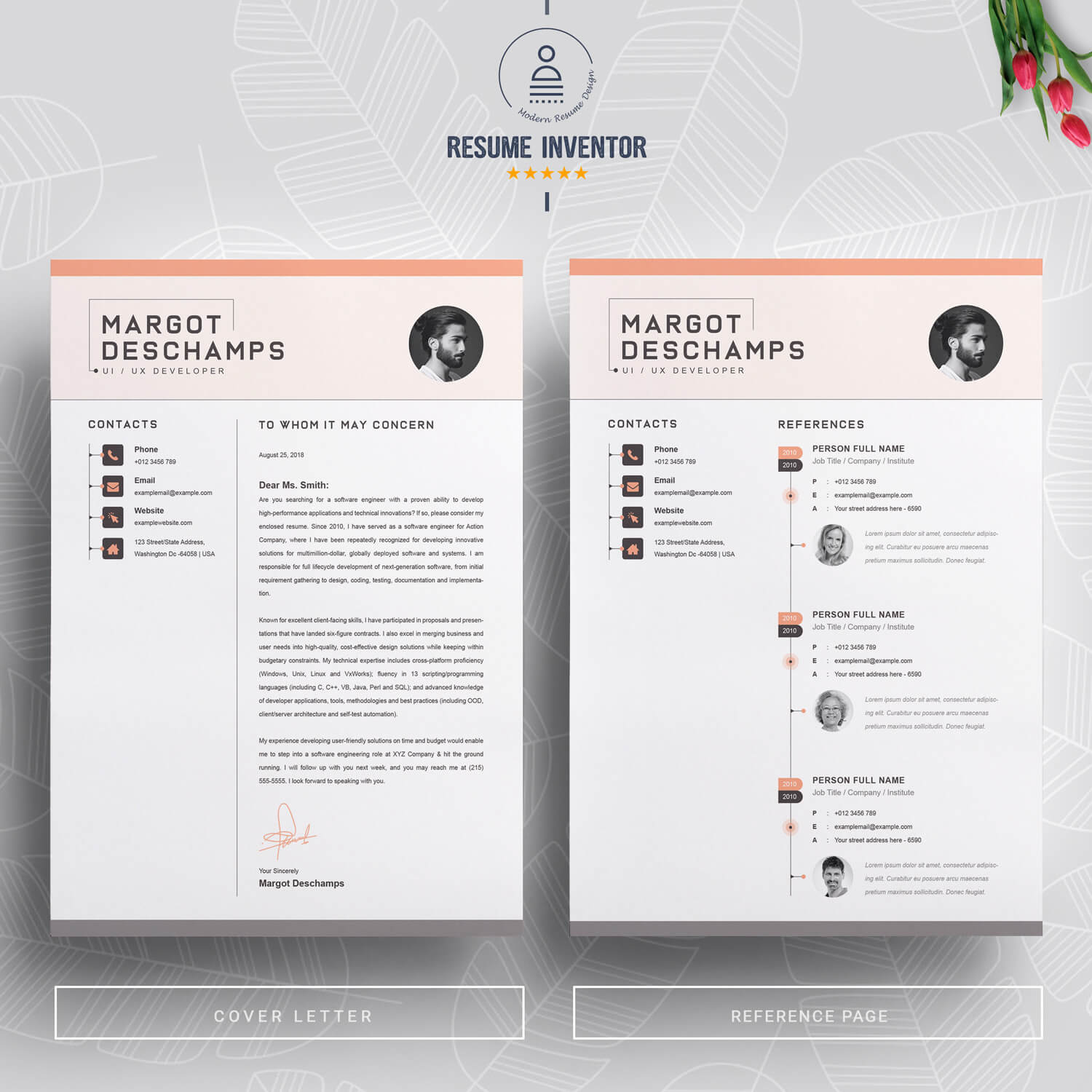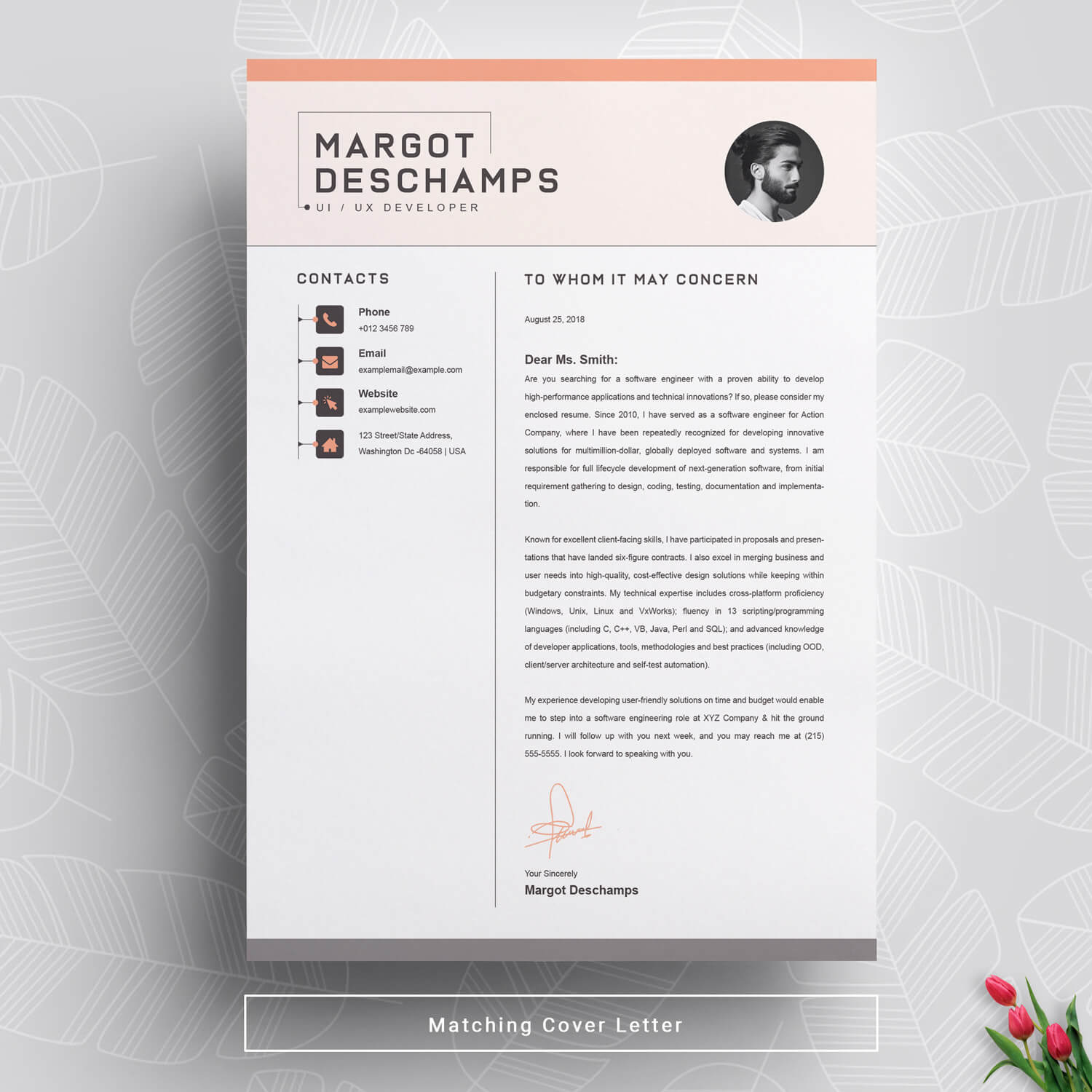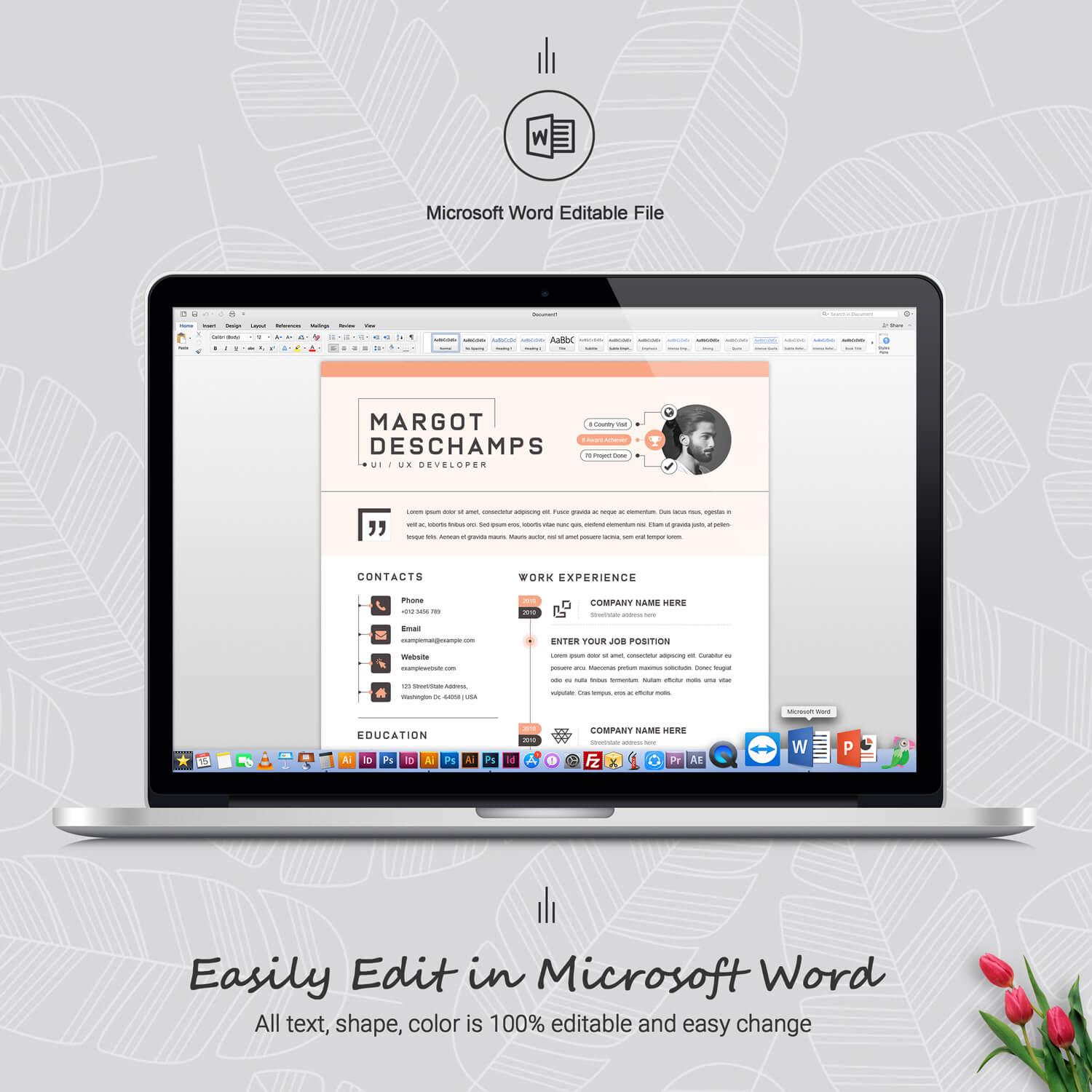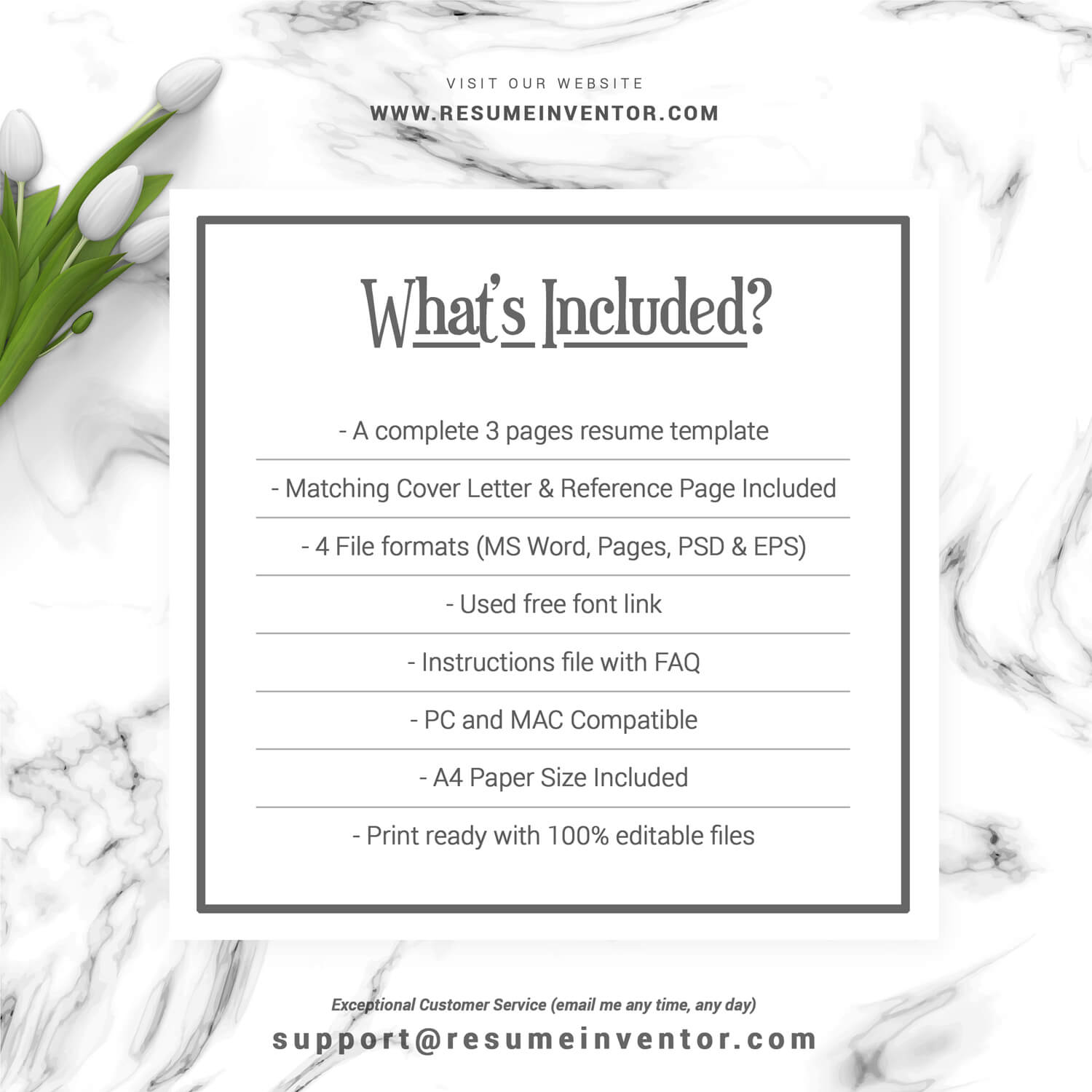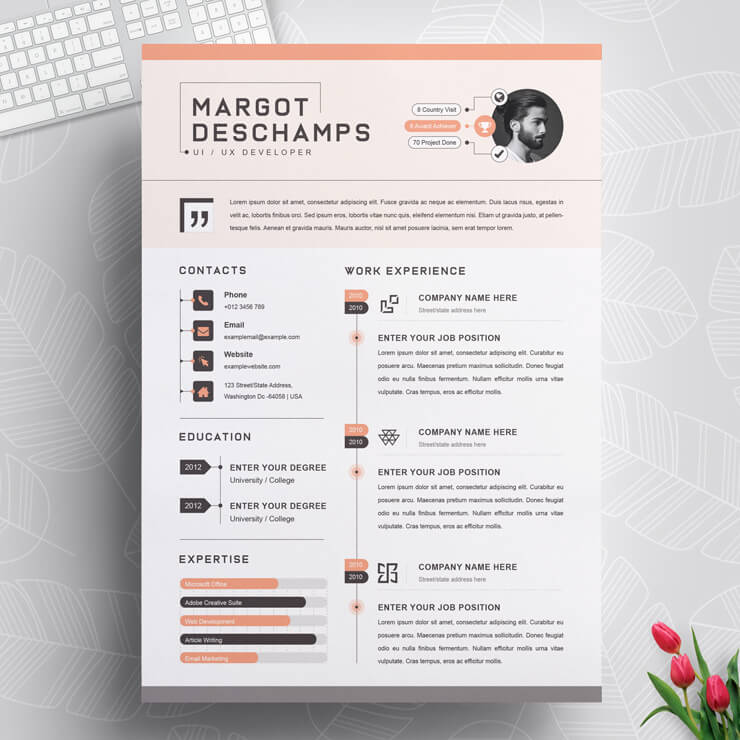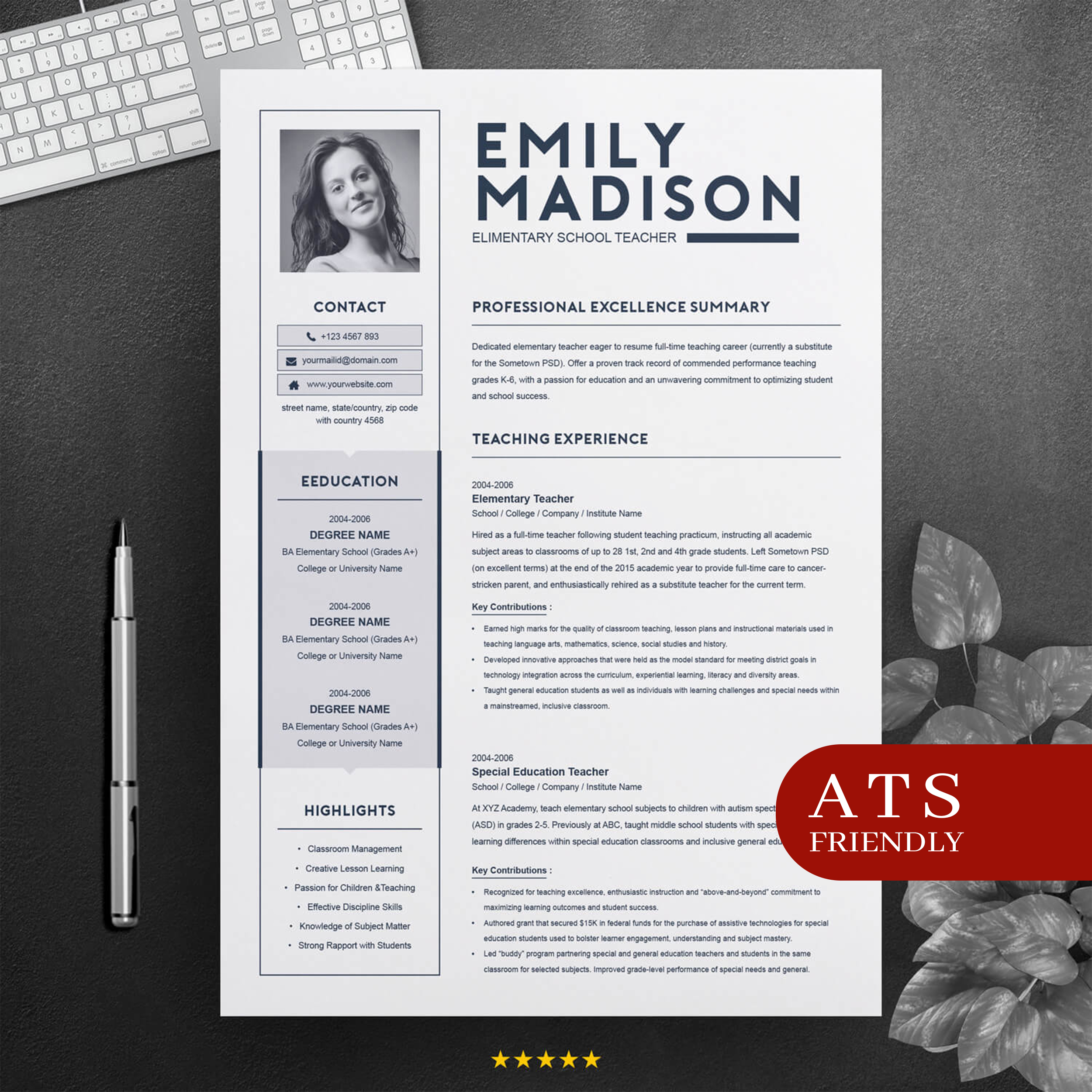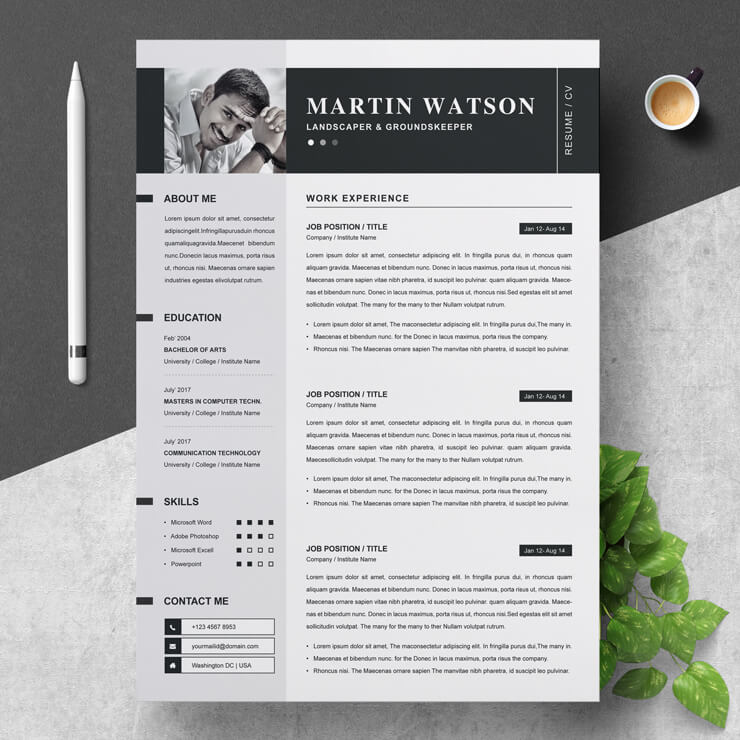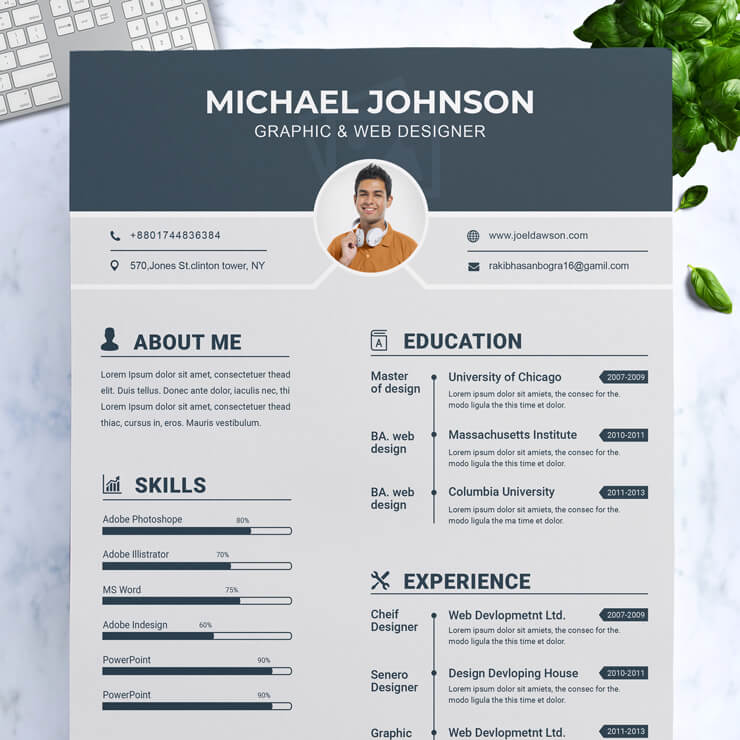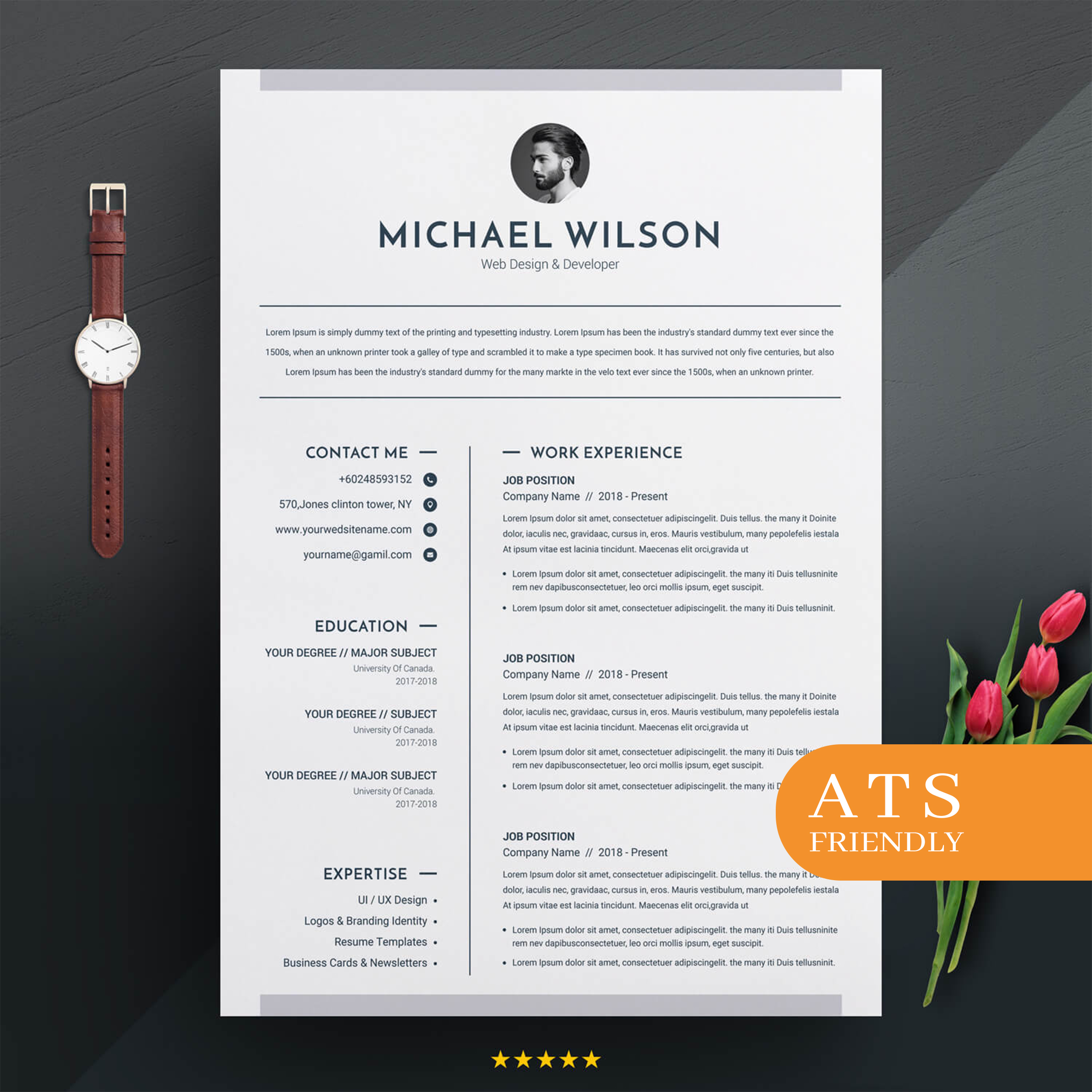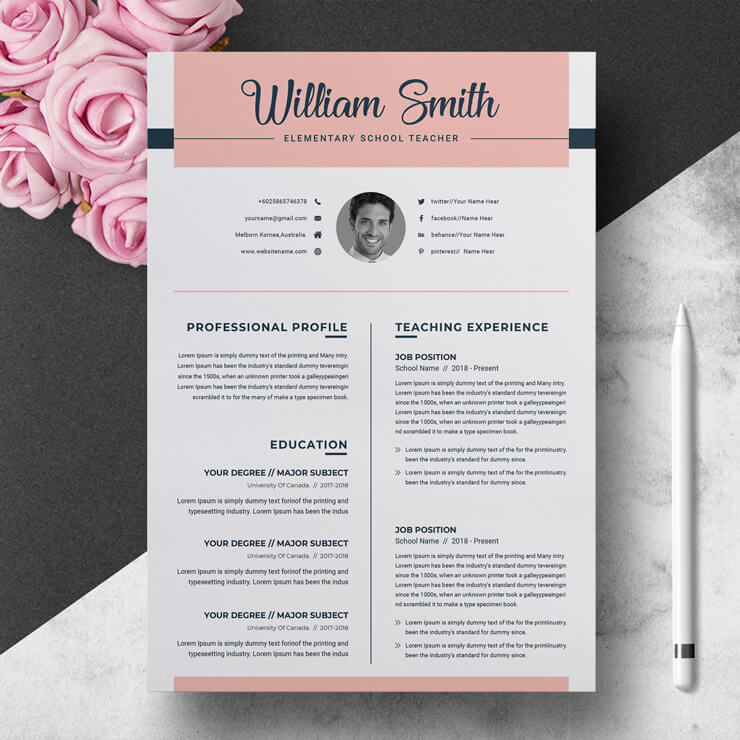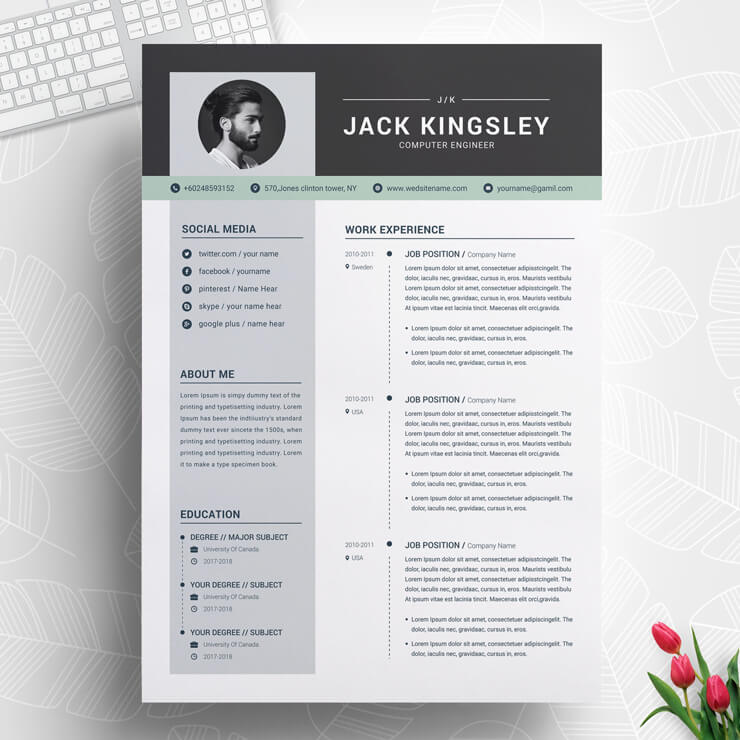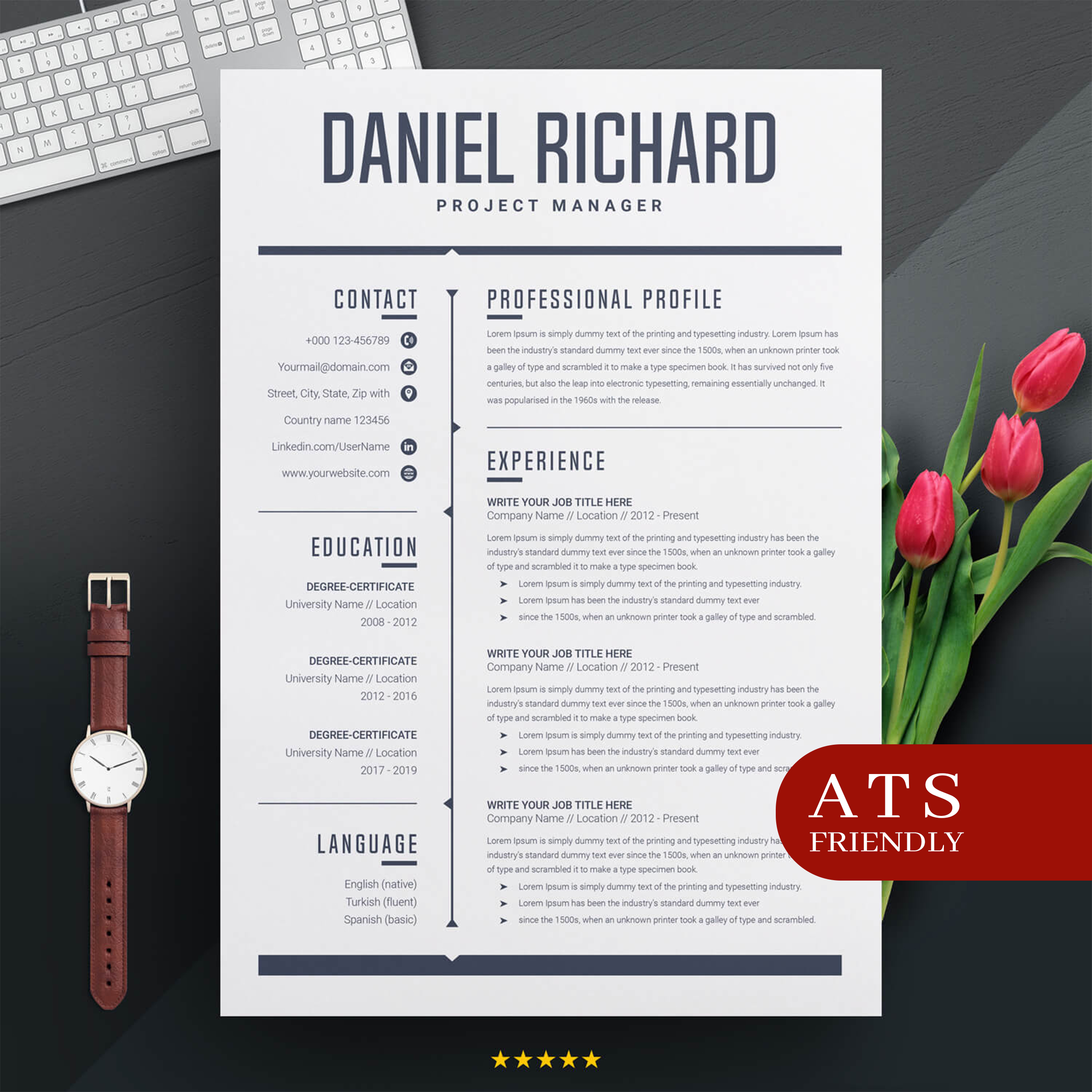UX Designer Resume Template With Cover Letter
Stand out from the crowd by using our professionally designed UX Designer resume template. Experts on resumes made this modern and elegant template, which will show off your skills, experience, and accomplishments to impress hiring managers. Our template is fully customizable to your unique background and incorporates relevant keywords that apply to UX design roles.
We provide tips and examples for powerful content and a matching cover letter template. With various file formats included, you can easily tailor and submit your application.
Our template offers a clean layout, an organized structure, and engaging visuals to capture attention. Take your application to the next level with a resume that gets you noticed.
What Is a UX Designer?
A UX (user experience) designer looks at how a user interacts with a product, service, or system. They make the user happier and more satisfied by making the interaction easier to use, more accessible, and more fun.
UX designers conduct research to understand user behaviors, needs, and motivations. They analyze workflows, create user personas, wireframe site maps, and prototype designs. UX designers identify problems with navigation, layout, imagery, text, features, and functionality that affect the user experience. They collaborate with stakeholders and conduct A/B testing to optimize designs. The work of a UX designer impacts how users perceive and engage with a product.
The UX design field is expansive with over 1.1 million jobs across the United States as of 2025. It includes specializations such as UX architects, UX researchers, UX writers, interaction designers, visual designers, and more. UX design skills are in high demand, with an expected job growth of 13% between 2020 and 2030.
What Does a UX Designer Do?
The day-to-day duties of a UX designer may include:
- Research: Interview users, create surveys, conduct website audits, analyze web analytics, study competitors.
- Analysis: Define user needs, map customer journeys, document workflows, outline pain points.
- Ideation: Brainstorm solutions, sketch layouts and workflows, create user personas.
- Prototyping: Develop wireframes and mockups, create interactive prototypes.
- Testing: Conduct usability testing, validate designs with target users, iterate based on feedback.
- Collaboration: Work with product teams, engineers, content creators to improve UX.
- Visual Design: Design the look and feel of products by applying principles of visual design and layout.
- Documentation: Write user stories, document features, outline UX requirements, prepare style guides.
- Launch Support: Track performance metrics, identify UX issues, optimize user flows.
UX designers may work on projects like redesigning websites, building mobile apps, or creating software. Deliverables can include sitemaps, prototypes, flowcharts, design mockups, and usability reports.
UX Designer Resume Template Customization Tips
Crafting a resume that effectively showcases your UX design skills and experience requires strategic planning and execution. With competition high for roles in this exciting field, standing out from the applicant pool is vital. Our comprehensive UX designer resume writing tips will guide you in creating an engaging resume that prompts recruiters to consider your application further. Whether you’re a junior UX designer looking to land your first role or a seasoned expert pursuing a promotion, these tips will help you produce a polished resume that highlights your user-centered approach and passion for problem-solving. Continue reading for insider advice and examples that will take your resume to the next level. With the right preparation and presentation of your expertise, you can come across as the ideal candidate for UX design opportunities.
Create a Professional UX Designer’s Resume Header
Your resume header serves as the first impression you make on potential employers. It should be professional, concise, and provide essential contact information. A well-crafted header sets the stage for the rest of your resume.
- Name: Use your full name, often in a larger font to stand out.
- Contact Information: Include phone number, email address, and location (city and state).
- LinkedIn Profile: Add your LinkedIn profile link to provide more information.
Example:
- John Doe
- Phone: (555) 555-5555 | Email: john.doe@email.com | Location: New York, NY
- LinkedIn: linkedin.com/in/johndoe
Write a UX Designer Resume Summary or Objective
Your resume summary or objective is a brief, impactful statement that encapsulates your professional identity and career aspirations. It should highlight your core competencies and what you bring to the table as a UX Designer.
- Resume Summary: A summary is ideal if you have substantial UX experience. It should summarize your key accomplishments and skills.
- Resume Objective: Use an objective if you’re an entry-level or transitioning UX Designer. State your career goals and what you aim to achieve in the role.
Example (Summary):
Results-driven UX Designer with 7+ years of experience in crafting intuitive interfaces. Proven track record of improving user engagement and conversion rates by 20% through data-driven design. Expertise in user research, wireframing, and prototyping. Seeking to elevate user experiences at [Company Name].
Example (Objective):
Passionate UX enthusiast transitioning from graphic design. Eager to apply my creative eye and problem-solving skills to create seamless user experiences. Seeking an entry-level UX Designer role to learn and contribute to innovative projects at [Company Name].
Highlight Your UX Designer Skills
Your skills section is a critical component of your UX Designer resume. It provides a snapshot of your qualifications and expertise. To stand out, focus on both technical and soft skills relevant to the UX field.
Here are some important technical and soft skills to include on a UX designer resume:
Technical Skills:
- Wireframing and prototyping tools (Figma, Sketch, InVision, Adobe XD, etc.)
- Design software (Photoshop, Illustrator, InDesign)
- HTML/CSS
- User research skills
- Usability testing
- A/B testing
- Google Analytics
- Data analysis
- Agile/Scrum methodologies
- Excel or other data tools
Soft Skills:
- Communication skills
- Collaboration and teamwork
- Problem-solving
- Critical thinking
- Organization
- Time management
- Creativity
- Empathy
- Interpersonal skills
- Active listening
- Writing skills
- Presentation abilities
Other skills to consider:
- Design thinking
- Information Architecture
- Interaction design
- Visual design
- Content strategy
- Accessibility best practices
- Design systems
- Responsive web design
- Mobile app design
- Cross-functional collaboration
Add Your Work Experience
Your work experience section should be the heart of your resume. Detail your professional journey, highlighting achievements, projects, and responsibilities demonstrating your UX expertise.
- Job Descriptions: Provide concise, action-oriented descriptions of your roles, emphasizing how you contributed to user-centered design and project success.
- Quantify Achievements: Whenever possible, quantify your accomplishments with metrics or percentages to showcase the impact of your work.
Example:
UX Designer, XYZ Tech
- Led a team of 3 designers, resulting in a 15% increase in project efficiency.
- Redesigned the company website, resulting in a 25% increase in user engagement.
- Conducted 50+ user interviews to inform product enhancements, resulting in a 30% decrease in bounce rates.
Add Your Education & Certifications
Your education section should include your academic credentials, relevant certifications, and any additional coursework that enhances your qualifications as a UX Designer.
- Degree: Mention your highest degree first, including the institution, graduation date, and major.
- Certifications: List any UX-related certifications, such as Nielsen Norman Group UX Certification or UX Design Institute Professional Diploma.
Example:
- Bachelor of Science in Human-Computer Interaction
- XYZ University | Graduated: May 20XX
- Certifications: UX Design Institute Professional Diploma, Google UX Design Certificate
Add Other Relevant Sections
Supplement your resume with additional sections that can help you stand out. This could include language proficiency, publications, speaking engagements, or UX-related personal projects.
Languages: If you’re proficient in multiple languages, mention them.
Example:
Languages: Fluent in English and Spanish
Publications: Include any articles, blogs, or papers related to UX design.
Example:
Personal Projects: Created a mobile app for tracking user journeys and conducting remote usability tests.
Personal Projects: Showcase personal UX design projects that demonstrate your passion and creativity.
Example:
Personal Projects: Created a mobile app for tracking user journeys and conducting remote usability tests.
UX Designer Cover Letter Writing Tips
Here are some effective tips for writing a compelling cover letter as a UX designer:
- Research the company and role – Study their products, services, design philosophy to reference in your letter. Understand their needs to tailor your letter.
- Highlight relevant UX work – Feature 1-2 projects that showcase skills needed for the role. Demonstrate your work process and impact on users.
- Focus on soft skills – Communication, collaboration, critical thinking and other soft skills enable UX design success. Provide examples that highlight these.
- Align with the job description – Draw connections between your background and their requirements. Mirror key words and phrases from the job posting.
- Convey passion – Share why you are excited by and committed to user-centered design. Show enthusiasm for the role.
- Be concise – Keep to 3-4 short, targeted paragraphs. Get straight to the point.
- Use a clear structure – Open with a intro statement tailored to the role. Include 2-3 body paragraphs on your fit and background. Close with a future-focused statement.
- Reflect brand voice – Adopt a warm, conversational tone that fits the company’s brand personality.
- Focus on value – Demonstrate how you can contribute value to users and the business through UX design.
- Perfect presentation – Avoid typos. Use letterhead matching your resume. Include contact info in signature.
With strategic messaging, you can craft a compelling narrative about how your skills and experience make you the ideal UX designer for the company.
Most Common FAQs About UX Designer Resume Template
What is a UX Designer Resume Template?
- A UX Designer Resume Template is a pre-designed format that simplifies creating a professional resume tailored specifically for UX designers. It typically includes sections for personal information, career summary, skills, work experience, education, and more. These templates often follow best practices for UX design, ensuring that your resume looks visually appealing and effectively communicates your qualifications.
What makes a good UX designer resume?
- Shows problem-solving skills and attention to detail – Include project summaries highlighting your role in identifying issues and creating solutions through user research, wireframing, prototyping, testing.
- Demonstrates UX software and tool skills – Incorporate relevant programs like Figma, Sketch, InVision, Adobe CC to showcase proficiency.
- Conveys strong communication abilities – Mention deliverables like user stories, flowcharts, mockups, reports that require collaboration.
- Aligns with job description – Match resume content with language from the job posting. Tailor resume to role.
- Applies design principles – Use clean, organized layout with easy-to-scan sections and consistent formatting.
How do I use a UX Designer Resume Template?
- First, buy this UX Designer Resume Template, then replace the template’s sample content with your own information, including your name, contact details, work history, skills, and education.
- Customize the template’s design and layout as needed.
- Save the final document in a compatible file format and send it to potential employers.
How do I make a UX designer resume with no experience?
- Showcase UX-related academic projects – Class assignments involving design thinking and research demonstrate aptitude.
- Include internships and volunteer work – Any experience interacting with users provides insights into the field.
- List relevant coursework – UX principles, design research methods, prototyping tools.
- Attend hackathons and workshops – Add certificates to illustrate continued learning and engagement.
- Start a UX blog or portfolio – Writing posts and case studies displays passion and knowledge.
How long should a UX resume be?
- 1 page is standard for early-career UX designers or those with under 7 years of experience.
- 2 pages are acceptable once you have accumulated more extensive experience and projects.
- Focus on curating the most relevant content over length. More impactful than quantity of items.
INCLUDES:
- Cover Letter Template (can also be used as a thank you letter)
- Microsoft Word (.docx) files
- Apple Pages (.pages) files
- Photoshop (PSD) Files
- Illustrator (EPS) Files
- Detailed Instructions file
- A4 Paper Size Included
- Links to free fonts used
- 24/7 hours Fast and friendly customer service
Share Now!
